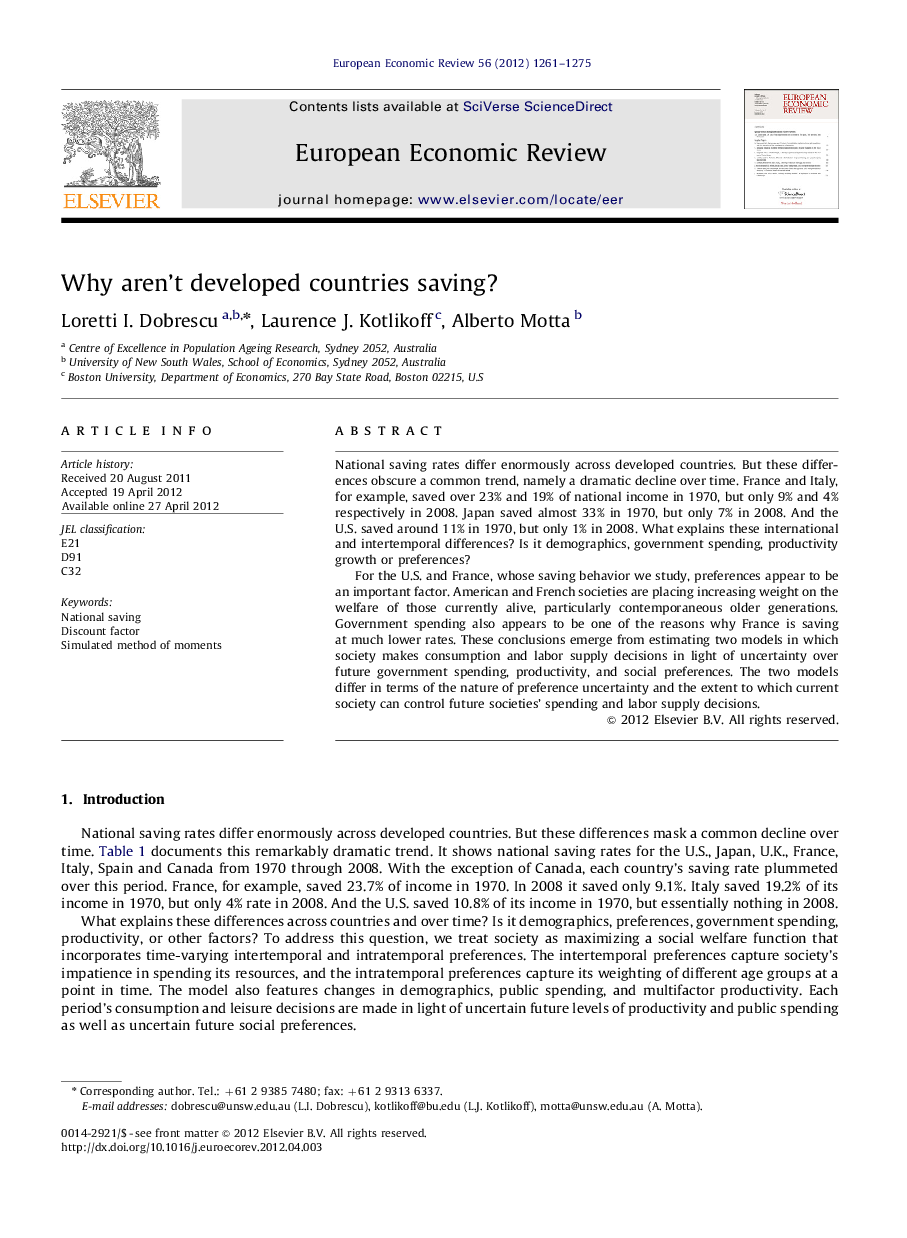| Article ID | Journal | Published Year | Pages | File Type |
|---|---|---|---|---|
| 5067142 | European Economic Review | 2012 | 15 Pages |
National saving rates differ enormously across developed countries. But these differences obscure a common trend, namely a dramatic decline over time. France and Italy, for example, saved over 23% and 19% of national income in 1970, but only 9% and 4% respectively in 2008. Japan saved almost 33% in 1970, but only 7% in 2008. And the U.S. saved around 11% in 1970, but only 1% in 2008. What explains these international and intertemporal differences? Is it demographics, government spending, productivity growth or preferences?For the U.S. and France, whose saving behavior we study, preferences appear to be an important factor. American and French societies are placing increasing weight on the welfare of those currently alive, particularly contemporaneous older generations. Government spending also appears to be one of the reasons why France is saving at much lower rates. These conclusions emerge from estimating two models in which society makes consumption and labor supply decisions in light of uncertainty over future government spending, productivity, and social preferences. The two models differ in terms of the nature of preference uncertainty and the extent to which current society can control future societies' spending and labor supply decisions.
⺠National saving rates are dramatically declining across developed countries. ⺠We use the method of moments to estimate two models for the U.S. and France. ⺠In model 1, current social decision makers always remain in charge. ⺠In model 2, social decision makers change through time. ⺠We find that shifts in societal preferences are the principal reason for the decline in national rates of saving.
